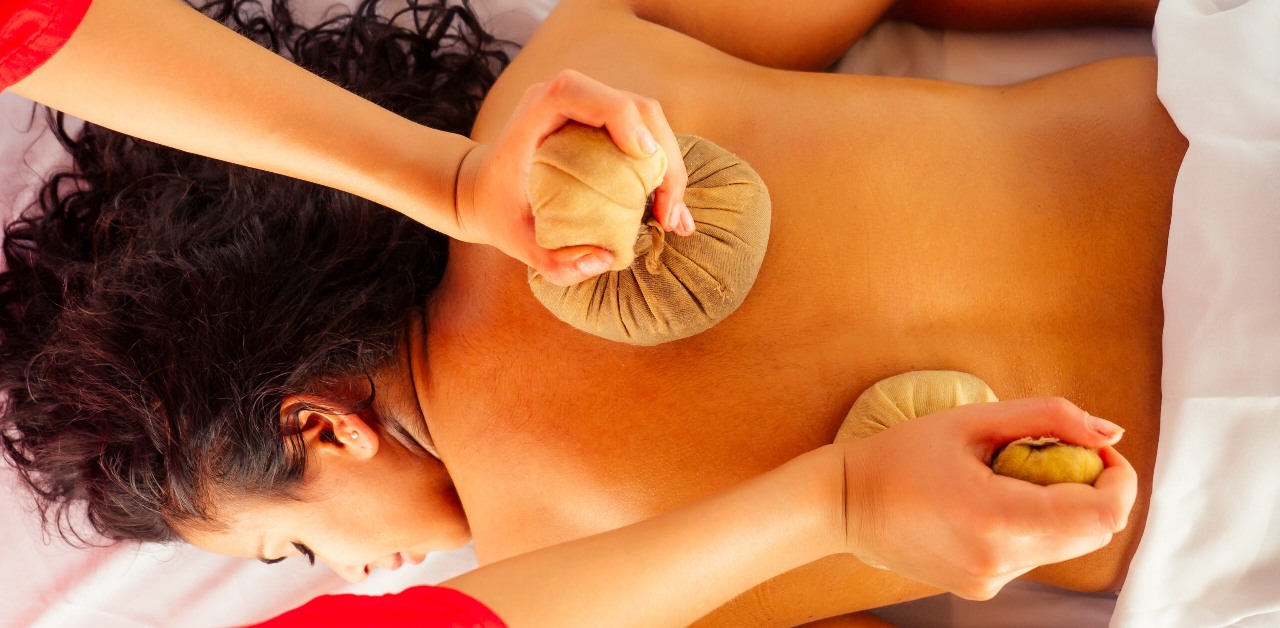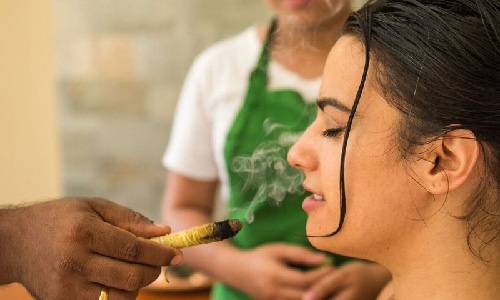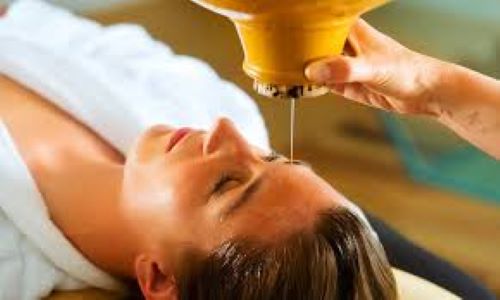Do you feel tired, sluggish, and bloated all the time, no matter what you eat? or, do you wake up with a thick white coating all over your tongue, too much mucus in your throat, or a general feeling of lethargy? These are classic signs of Kapha Dosha imbalance and toxin buildup (Ama) in the body, according to Ayurveda. Before you panic, let me tell you this: Ayurveda has a solution to clear all that and leave you feeling lighter and energized – Vamanam therapy! In fact, Ayurveda suggests different ways to flush these toxins and restore balance to your body to make you feel lighter, more energetic and refreshed. Vamanam – one of the five detox therapies of Panchakarma is one of the most effective. It is an Ayurvedic purification treatment wherein excess Kapha gets removed from the body via controlled therapeutic vomiting. I know, the thought of induced vomiting sounds weird (or even scary!) but trust me when done right with an expert, it’s a tool used for the most profound detox. What is Vamanam in Ayurveda ? Vamanam (also called Vamana Karma) is a specialized detox therapy under Panchakarma – the five-fold purification system in Ayurveda. An Ayurvedic doctor can recommend this treatment for imbalances caused by excess Kapha Dosha, which accumulates in the stomach, lungs and sinuses – ‘congestion’ in simple terms. Step-by-Step Guide to Vamanam Procedure These are the common steps followed while beginning with Vamana therapy: Preparation (Purva Karma) Your body is first prepared with Snehapana. This means that you need to consume medicated ghee for internal oleation. The second step is Swedana or therapeutic sweating to loosen accumulated toxins. You will also follow a Kapha aggravating diet (dairy, heavy and sweet tasting foods) to bring the excess Kapha into the stomach. Induction (Pradhana Karma) On the day of therapy, a special herbal decoction is given to induce controlled vomiting. It can be Yashtimadhu or Madanaphala decoction as advised by the physician. After this, the therapist gently massages your stomach to loosen up the accumulated toxins. As the vomiting starts naturally, extra mucus, toxins, and Kapha-related impurities from the stomach and upper respiratory tract are flushed out. When you feel done, you are allowed to rest. Post-Care (Paschat Karma) After Vamanam, you’ll be on a strict post-therapy diet. Since your body is now empty, it is important to nourish it with light, easy-to-digest food like rice gruel, soups, porridge, etc. You are advised to return gradually to regular meals thereafter. It is a very purifying and refreshing experience all at once! Benefits of Vamanam Therapy in Ayurveda Vamanam is more than just the act of throwing up. It’s a therapeutic way to reset your entire system. Let’s have a look at some of its amazing benefits: Clears excess mucus and congestion – Excellent for people suffering from chronic colds, sinusitis, or bronchitis. Enhances digestion and metabolism – Enhances Agni (digestive fire) and boosts digestion. This further helps in fat metabolism. Skincare – Detoxifies skin and cures eczema, psoriasis and acne. Weight loss support – Helps get rid of excessive Kapha, which causes obesity and slow metabolism. Improves respiratory health — Great for asthma, allergy attacks, and chronic cough. Mental clarity – After this treatment, you will feel lighter, energized, and emotionally balanced. Who Can Do Vamanam Therapy? Vamanam is beneficial for: Kapha disorders (chronic cold, sinusitis, bronchitis, allergies) Vamanam is specifically prescribed to balance Kapha Dosha which is known to cause: Excessive mucus production Digestion and metabolism inactivity Weight gain and fluid retention Constant nasal stuffiness, sinus infections and allergies Vamanam gets to the root of Kapha and balance is restored, preventing many of these conditions from becoming chronic. Obesity, low metabolism and weight gain If you feel stuck in a Kapha-dominant body, where no matter what you do, you gain weight easily and lose it slowly, Vamanam can be a game-changer. It: Boosts metabolism by stimulating Agni (digestive fire) Reduces sluggishness and heaviness caused by excessive mucus Eliminates deep-rooted Kapha toxins, making weight loss easier People with asthma and respiratory congestion Vamanam therapy offers relief to people suffering from: Asthma: Clears congestion, making breathing easier Allergic rhinitis: Removes toxins causing frequent sneezing and blocked sinuses Chronic cough and bronchitis: Expels thick mucus that’s hard to eliminate otherwise Skin conditions, such as eczema, psoriasis and acne Ever wondered why digestive detox is linked to clear skin? Ayurveda believes that skin disorders arise from excess Kapha and toxins in the body. Vamanam purifies the system, leading to: Reduced inflammation in eczema and psoriasis Clearer, brighter skin by removing Ama (toxins) Balanced oil production, preventing acne breakouts Digestive abnormalities, such as nausea, lack of appetite and heaviness Vamanam rekindles the digestive fire or Agni by flushing out the toxins. This goal is achieved by combining this treatment with a three-month diet plan. Who Should Avoid Vamanam? Vamanam therapy is not for all. The following people should avoid it: Weak persons, children and old persons Those having peptic ulcers, acid reflux and weak digestion Pregnant women and new mothers People with aggravated Pitta (excessive heat in the body, gut ulcers or excessive bile production) People with hypertension or heart diseases Post-Vamanam Diet Guidelines It is important to have light and easily digestible foods after Vamanam as your digestive fire is delicate and needs to be nurtured. Start with Peya (rice gruel) and soups, slowly shifting to semi-solid foods like Khichdi For a couple of days, avoid dairy, cold drinks and heavy foods Eat mindfully, chew well, and consume warm, cooked food Maintaining digestive health by following an early dinner routine Can Vamanam be Done at Home? Please don’t. This is a therapeutic procedure in which many factors are taken into consideration depending upon an individual’s unique constitution. What works for you might not work for others. Moreover,… Continue reading A Complete Guide to Vamanam Therapy
A Complete Guide to Vamanam Therapy









